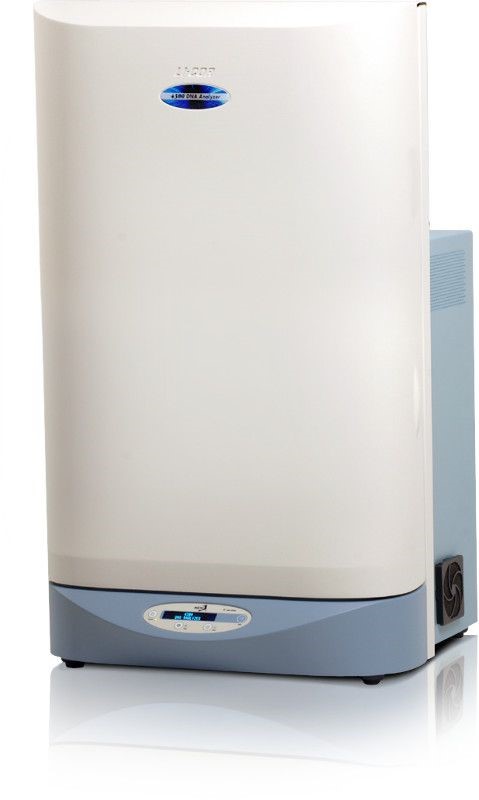Brand / Model: Li-cor
/ 4300L

Li-cor / 4300L achieves accurate and precise results in DNA Sequence Analysis thanks to its infrared advantage, high sensitivity and wide dynamic range. Used in genomic research studies. Since biological molecules, gels and glass plates have infrared fluorescence, high sensitivity results are obtained thanks to the infrared detection system.
Technicial Specifications:
Laser Life: 40,000 - 60,000 hours
Laser Source for 700 Channels: Solid-State diode laser 685
nm
Laser Source for 800 Channels: Solid-State diode laser 785
nm
Detectors: Two silicon avalanche photodiodes
Scan Speed: 5 user-selectable scan speeds to optimize image
quality
Working Conditions: 15 -35 oC, dew point maximum 19 oC
Sample Features:
1. Transport and storage conditions of the sample: Samples
requiring cold chain must be brought to the laboratory without breaking the
cold chain. Samples must be delivered in RNase / DNase free 0.5-2 mL eppendorf
tubes. Tubes that are cracked, broken or that do not have a clean appearance
will not be accepted as they may have impaired the properties of the sample.
Sample tubes must have a label containing information to explain the sample.
2. Concentration, amount and documents to be submitted in
order to perform the test in accordance with the sample description are stated
below.
DNA samples;
A. Before the DNA sample to be sequenced is delivered, it
must be amplified and purified by PCR method.
B. If the DNA sample to be sequenced is not a PCR product;
It should be in a concentration of 50-100 ng / µl and in a volume of at least
25 µl.
C. Forward or reverse primers specific to the DNA region to
be sequenced should be delivered at a concentration of 10 pmol and in a volume
of at least 10 µl. If sequence analysis is desired to be done bi-directionally
(with both forward and reverse primers), both primers must be delivered under
the conditions stated above.
PCR products;
A. The PCR product to be sequenced must be purified before delivery.
B. It should be 50 µl of unpurified sample and 25 µl of
purified sample.
C. Forward or reverse primers specific to the DNA region to
be sequenced should be delivered at a concentration of 10 pmol and in a volume
of at least 10 µl. If sequence analysis is desired to be done bi-directionally
(with both forward and reverse primers), both primers must be delivered under
the conditions stated above.
Application:
Microsatallite, AFLP analysis, Tilling, Ecotilling, DNA sequence